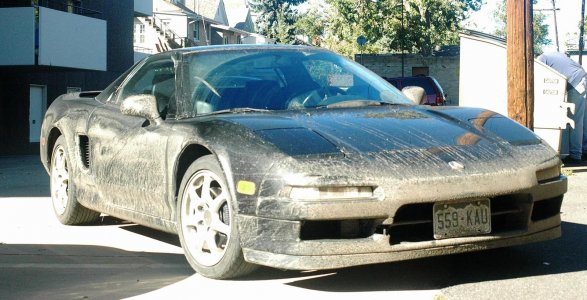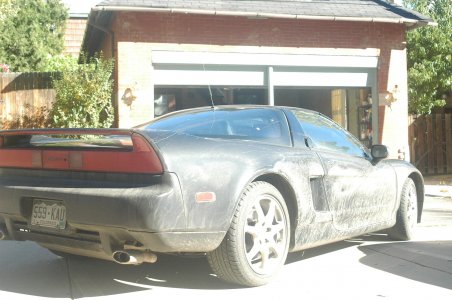Hi Everyone,
Forgive me if this has been discussed, but I couldn't find a thread covering it. I live outside of Chicago, one of the areas of the U.S. where the strategy of the highway department is to match the amount of snow that falls with an equivalent amount of salt. We had a dusting of snow the other day, and I thought that the roads in my area were clear of salt but when driving over an overpass I noticed the telltale heavy white powder and large granules of salt along the shoulders of the roadway . It seemed to be limited to the bridge and the roadway immediately leading up to the bridge. Granted that we're not talking about an extended drive along salty roads, but I was wondering if very many of you in the northern climates drive your car on salty roads in the winter and if so, have you noticed any adverse effects of doing so on your cars? I realize that the NSX is made primarily of aluminum but have researched the subject a little and have found that, contrary to what many believe, that aluminum does corrode when exposed to salt. It may not be as nasty or pronounced as the rusting of iron or steel but it will react. I seem to recall having met guys at past NSXPO's who said that they drove their cars through the snow all winter. I asked one of my Canadian friends about this who said that in Alberta they use sand and non-salt products in keeping their roads clear.
. It seemed to be limited to the bridge and the roadway immediately leading up to the bridge. Granted that we're not talking about an extended drive along salty roads, but I was wondering if very many of you in the northern climates drive your car on salty roads in the winter and if so, have you noticed any adverse effects of doing so on your cars? I realize that the NSX is made primarily of aluminum but have researched the subject a little and have found that, contrary to what many believe, that aluminum does corrode when exposed to salt. It may not be as nasty or pronounced as the rusting of iron or steel but it will react. I seem to recall having met guys at past NSXPO's who said that they drove their cars through the snow all winter. I asked one of my Canadian friends about this who said that in Alberta they use sand and non-salt products in keeping their roads clear.
Anyway, what's the general consensus? Is a little salt on the body and undercarriage of the NSX cause for concern or not? Thanks
Forgive me if this has been discussed, but I couldn't find a thread covering it. I live outside of Chicago, one of the areas of the U.S. where the strategy of the highway department is to match the amount of snow that falls with an equivalent amount of salt. We had a dusting of snow the other day, and I thought that the roads in my area were clear of salt but when driving over an overpass I noticed the telltale heavy white powder and large granules of salt along the shoulders of the roadway
Anyway, what's the general consensus? Is a little salt on the body and undercarriage of the NSX cause for concern or not? Thanks








